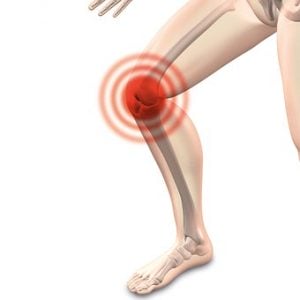 What is the mechanism of its formation and how to deal with it? How to protect yourself from it? Let’s expand the topic in more detail. You will find out more from this article.
What is the mechanism of its formation and how to deal with it? How to protect yourself from it? Let’s expand the topic in more detail. You will find out more from this article.
What is a “runner’s knee”?
The name of this pain syndrome appeared in medicine for a reason. The “runner’s knee” in short referred to as ITBS (Iliotibial Band Syndrome) mainly affects long-distance runners. Amazingly, its cause is almost never located in the knee. This syndrome is always associated with improper operation of the entire lower limb when running or walking fast.
ITBS formation mechanism.
You already know that the knee on all sides is surrounded by muscles. You also need to know that the vast majority of them are very long muscles, which also run over the hip joint. Also remember that the muscle as a shrink structure reacts with shortening or elongation to any movement in the joint next to which it runs. This information will be useful to us later.
The body is also protected by a network of so-called fascia. These are structures made up of tissue quite resistant to stretching, which, surrounding individual muscle groups, form a kind of “chamber” for them, thanks to which, for example, the knee flexors and rectifiers can work independently. The hip-tibia band is nothing more than such a fascial structure, which is why anatomy is also known as a broad thigh span.
Then how is it that it is the insertion of this non-shrinking structure that begins to appear “irritated” in the knee area while running?
A very important structure in ITBS is a small but insanely strong muscle wide span, located on the anterior side of the thigh. Its final insertion are intertwined into the upper part of the wide fascia and it is thus from a non-shrinkable structure (that is, the currently insulated hip-tibia band) a kind of shrink structure (complex band-tensioner muscle) is formed. Thanks to this combination of fascia and muscle, any movement and change in the hip joint affects the length and tension of the hip-tibia band, and therefore also its insertion in the side area of the knee.
It should also be noted that inner hip flexors and rotators (both of these movements are enabled by, amongst other, the wide sciatetensioner) are much stronger than the outer hip flexors and rotators. This information will also be useful to us.
Why running?
Running is a discipline in which the symmetry of the body’s work and the optimal tension of the so-called antagonistic muscles (responsible for opposing movements, e.g. external and internal rotators) is crucial in preventing injuries.
Imagine now that your inner hip rotators, including wide sciatetensionor, are 2 times stronger than outer rotators. The longer you run, the more both muscle groups get tired. Tired shrink tissue always corresponds to shortening. Muscles stronger in this case begin to pull in their own direction, and weak outer rotators can not cope.
How is this related to your knee?
Well, the excessive tension of the tired fascia tensioner entails the aforementioned hip-tibia band, which causes a very large stretch on its end insertion, that is… in the side area of the knee! This is how your hip causes “runner’s knee”, also called ITBS.
In conclusion, when the problem begins to arise, it will be best to go to a specialist who will diagnose the problem and help solve it.

